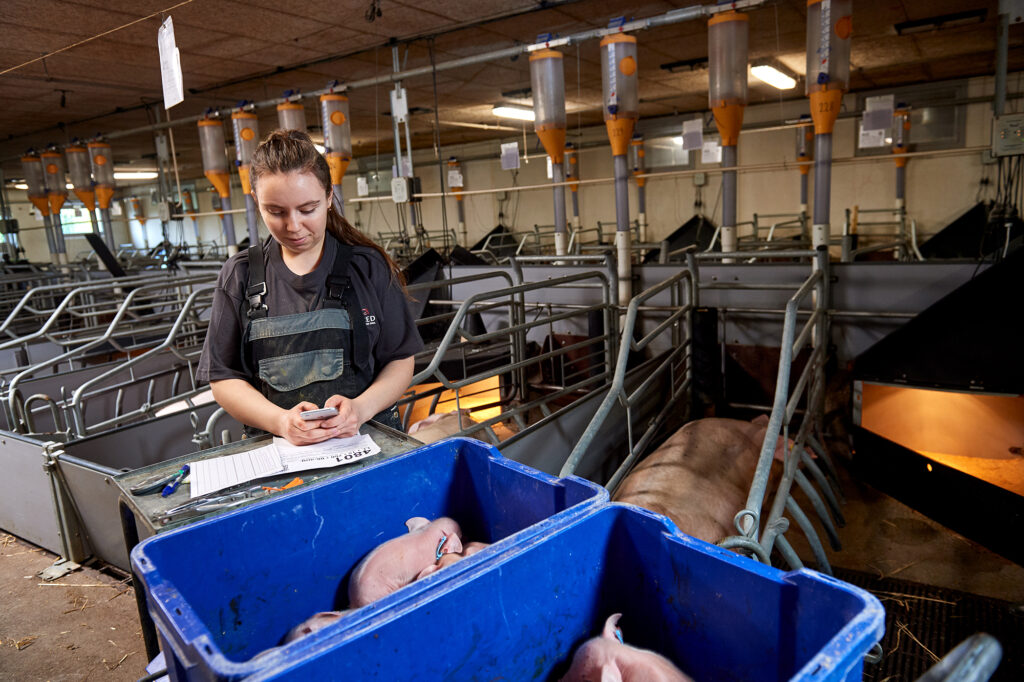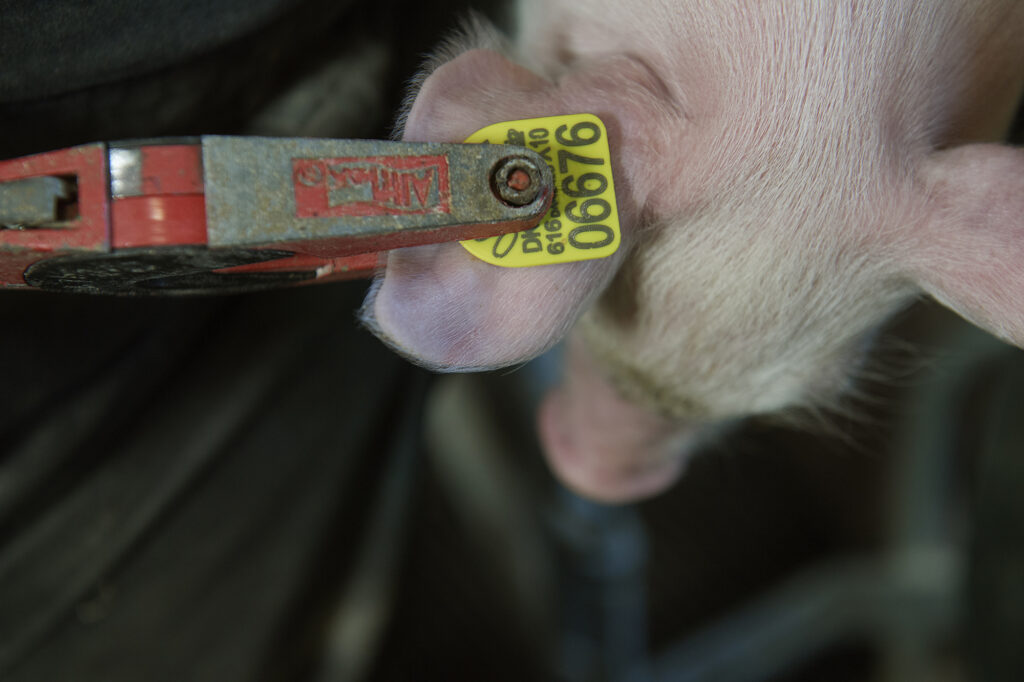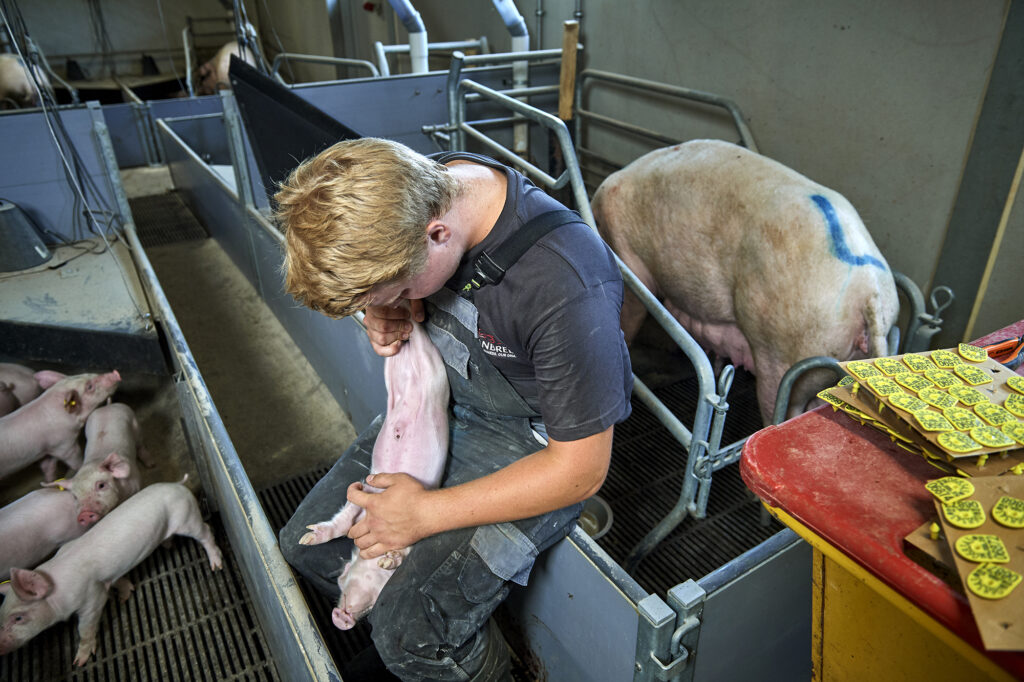Handling of GenePro
The planning of on-farm production and gilt supply chain is mainly related to the management of the mating unit, whereas much of the practical implementation of on-farm production is related to the management of the farrowing unit.
The farrowing unit is where the herds’ future gilts are handled for the first time. Making a little extra effort when managing the breeding litters and newborn gilts pays off when these are eventually entering the mating unit to be bred.
|
|
|
Management of newborn breeding litters
Breeding litters are a herds‘ future and should be given a little added attention which can easily be incorporated into the daily routines in the farrowing unit.
There are several routines, that will be beneficial to carry out the first 24 hours after birth, and are easily implemented into the daily routines.
ENSURING COLOSTRUM INTAKE
- Colostrum provides newborn pigs with the first important energy as well as antibodies which will form the basis for their immune system.
- The following are required to optimise the supply of colostrum for gilts:
- the gilts get to the teat,
- the gilts are given at least 12 hours to nurse the colostrum,
- the sow is healthy,
- the sow is well-immunised.
- Split suckling, where the males of the litter are detained while the females are given time to suckle, is an effective way to ensure colostrum intake – remember to give the males nursing time too.
|
|
|
NAVEL AND TEATS
- The umbilical cord is shortened to 3-4 cm. Cauterise or cut the umbilical cord. If scissors/nippers are used make sure to disinfect these between each animal.
|
|
|
- It is beneficial to protect the teats for the first few days with adhesive bandage as this will reduce abrasion and injuries to the teats.
|
|
|
LITTER EQUALISATION
- The newborn gilts will often be the progeny of first-parity sows with good maternal instincts.
- Wherever possible, let the gilts stay with their own sow, i.e. do not include gilts if doing litter equalisation.
- If by way of exception the gilts are moved, it is important to tag them with the sow’s name (by ear notching, tattooing or plastic-clip ear tag) to ensure correct pedigree information.
|
|
|
TEETH GRINDING
- Can be used provided that the herd has a documented need for this.
TAIL DOCKING
Tail docking can be a regular routine if there are issues with tail biting within the herd, thus compromising animal welfare and quality Make sure to follow local legislation.
- Tail docking should be made with a cauterisation knife within the first 2-4 days of life, the following precautions should be followed:
-
- The knife should be sufficiently heated – if the wound bleeds after tail docking, the knife is not hot enough.
- Burn the tails instead of cutting them – spend as much time as needed to reduce the risk of blood poisoning.
- The tails should be burned in an even line – if not, the healing process will be longer thus increasing the risk of infection.
- Clean and disinfect the tail burner frequently and make sure it is burning properly.
- Remove as little as possible- and no more than 50 % of the tail (local legislation might apply).
- Make sure that all tails are cut to the same length to further minimise the risk of tail biting.
Registration of breeding litters after farrowing
Make sure that you have a fixed plan for the handling of breeding litters in the farrowing unit as this will optimise the number of good breeding gilts available at weaning. When the sows enter the farrowing unit, make sure to mark clearly which sows will have breeding litters to ensure these sows and their gilts receive the attention that they need, as these gilts constitute the herds’ future.
|
|
|
Registration of piglets after farrowing:
- After farrowing, the number of female piglets in the litter should be registered.
|
|
|
- Ensure pedigree by marking the newborn female piglets with either ear notching, tattooing, plastic-clip ear tags or a permanent ear tag – use the mothers’ number to increase traceability.
|
|
|
- Give the gilts the final DanBred ear tag with the individual ID-number no later than at weaning.
|
|
|
The first selection of gilts
Continuously assess whether the gilts will be suitable for further breeding.
- Gilts which are clearly not thriving should not be used for further breeding females in the herd.
- Gilts with teat injuries and hernias are not selected for breeding.
|
|
|
- Gilts with less than 14 functioning teats can be removed.
|
|
|
Registrations for Nucleus Management
- Give each gilt an individual ID-number, no later than at weaning.
- Register the following information in the chosen software program and export the data to the DanBred databank:
- date of birth
- races (determined based on the parents’ master data)
- the assigned ID-number
- parents’ name and ID-number.
- Following the registration indexes for the new breeding gilts will be calculated and available for download on a weekly basis.
|
|
|
























